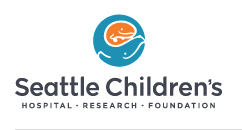Rolandic Epilepsy Genomewide Association International Study
| Status: | Recruiting |
|---|---|
| Conditions: | Neurology |
| Therapuetic Areas: | Neurology |
| Healthy: | No |
| Age Range: | 6 - 25 |
| Updated: | 8/16/2018 |
| Start Date: | June 1, 2018 |
| End Date: | December 31, 2020 |
| Contact: | Professor Deb K Pal, MA MSc PhD MRCP |
| Email: | amber.collingwood@kcl.ac.uk |
| Phone: | +44 (020) 7848 5162 |
We have discovered a small change in the genetic code which increases the risk of the
brainwave abnormality that is found in rolandic epilepsy. We now wish to confirm this using a
second much larger sample of patients. We will investigate the other genetic changes that
cause people with the brainwave abnormality to develop seizures, as well as problems with
speech, coordination, attention and learning.
brainwave abnormality that is found in rolandic epilepsy. We now wish to confirm this using a
second much larger sample of patients. We will investigate the other genetic changes that
cause people with the brainwave abnormality to develop seizures, as well as problems with
speech, coordination, attention and learning.
Epilepsy is a common neurological disorder affecting 1% of the population. There are over 30
types of epilepsy, some common, some rare. Most epilepsies arise in childhood and have a
genetic cause. Approximately 25% of child patients have "Rolandic Epilepsy" or RE, also known
as Benign Epilepsy with Centrotemporal Spikes (BECTS). RE has a complex genetic basis,
probably made up of combinations of susceptibility variants in different genes. Children with
RE quite often have other symptoms that affect their speech, attention, reading ability or
coordination. The goal of this study is to find the genetic basis for susceptibility to
seizures and associated comorbidities for RE using genomewide association approaches.
We know that RE has a genetic basis and we recently discovered the genetic cause of the EEG
pattern seen in RE. The goal of REGAIN is to now find the genetic basis for susceptibility to
seizures and the associated symptoms above. Our hope is to be able to improve diagnosis and
understand why each child with RE is different, and perhaps point us towards new treatments
that are more effective and have fewer side effects.
We will compare the genetic code of 3,000 children with RE against a similar number of people
not affected by epilepsy. With the proposed large sample of participants, we will be able to
pinpoint the exact changes that might lead to seizures or attention problems for example.
Learning the genetic basis for these problems will deepen our understanding of the mechanisms
and lead to new treatments or cures.
types of epilepsy, some common, some rare. Most epilepsies arise in childhood and have a
genetic cause. Approximately 25% of child patients have "Rolandic Epilepsy" or RE, also known
as Benign Epilepsy with Centrotemporal Spikes (BECTS). RE has a complex genetic basis,
probably made up of combinations of susceptibility variants in different genes. Children with
RE quite often have other symptoms that affect their speech, attention, reading ability or
coordination. The goal of this study is to find the genetic basis for susceptibility to
seizures and associated comorbidities for RE using genomewide association approaches.
We know that RE has a genetic basis and we recently discovered the genetic cause of the EEG
pattern seen in RE. The goal of REGAIN is to now find the genetic basis for susceptibility to
seizures and the associated symptoms above. Our hope is to be able to improve diagnosis and
understand why each child with RE is different, and perhaps point us towards new treatments
that are more effective and have fewer side effects.
We will compare the genetic code of 3,000 children with RE against a similar number of people
not affected by epilepsy. With the proposed large sample of participants, we will be able to
pinpoint the exact changes that might lead to seizures or attention problems for example.
Learning the genetic basis for these problems will deepen our understanding of the mechanisms
and lead to new treatments or cures.
Inclusion Criteria:
1. Diagnosis of Rolandic Epilepsy in accordance with the following international
criteria:
- Age of first afebrile seizure 3-12 years
- Seizures comprising focal sensorimotor seizures affecting the vocal tract and
face, with or without involvement of the arm
- Predominant sleep-related seizures
- EEG interictal centro-temporal spikes with normal background
2. Current age 6-25 years
Exclusion Criteria:
1. No history of focal seizure
2. Normal EEG or abnormal background features on EEG
3. Known structural causes (stroke, tuberous sclerosis, infection, post-infectious or
metabolic)
4. Primary diagnosis of autism or global learning disability
5. Focal central neurological deficit on clinical exam,
6. Unable to provide informed consent
7. Unable to provide blood sample
We found this trial at
4
sites
Click here to add this to my saved trials
Click here to add this to my saved trials
Columbia University Medical Center Situated on a 20-acre campus in Northern Manhattan and accounting for...
Click here to add this to my saved trials
Seattle Children's Hospital Seattle Children’s Hospital specializes in meeting the unique physical, emotional and developmental...
Click here to add this to my saved trials

